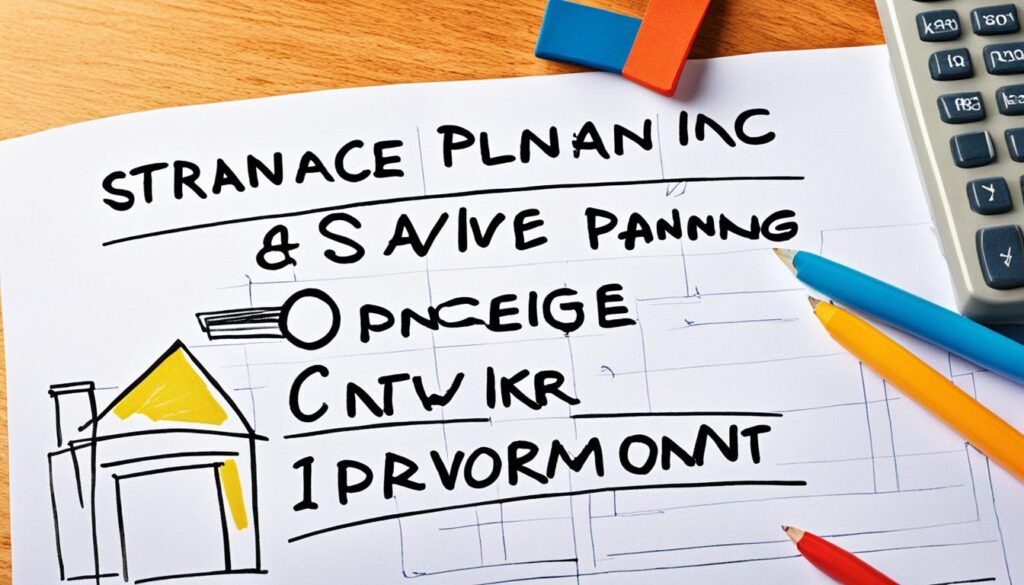Did you know that the average annual cost of tuition and fees can reach over $39,000 for private colleges, while in-state residents at public universities pay just under $11,000 annually1? As parents navigate the significant financial choices inherent in raising children, the question often arises: should they focus on home improvements or prioritize establishing a college fund? With escalating costs associated with both education and homeownership, many individuals grapple with the ideal allocation of their financial resources. Understanding the implications of investing in either a house or a 529 college savings plan requires not only insight into current trends but also a robust financial planning strategy to secure long-term stability. By evaluating their specific circumstances, parents can develop a tailored approach that enhances both their home equity and their children’s educational opportunities—decisions that ultimately impact their overall net worth and financial health.
Both home improvements and college savings possess unique advantages that can contribute positively to a family’s financial future, emphasizing the need for informed decision-making in these high-stakes areas.
Key Takeaways
- The average college tuition can soar as high as $39,000 per year for private institutions.
- Homeowners must consider how either investment impacts long-term financial planning.
- 529 plans offer tax-free withdrawals for educational uses, providing valuable liquidity.
- The decision to improve a home or fund education should reflect individual family needs and goals.
- Financial experts encourage analyzing mortgage interest rates when deciding on spending priorities.
Understanding the Financial Landscape
Managing family finances necessitates a clear understanding of the major expenses that parents face. This often includes the crucial areas of housing and education savings, which significantly impact financial planning. An annual Federal Reserve survey shows that 37% of U.S. families cannot handle an unexpected $400 expense, emphasizing the need for strategic budgeting decisions2. Furthermore, exploring various funding options becomes critical as financial guidance suggests that investing a minimum of 10% of income in employer retirement plans can lead to substantial long-term benefits2.
Overview of Major Expenses for Parents
Families typically encounter several significant expenses, which can be categorized as follows:
- Housing costs, including mortgage payments and maintenance
- Childcare and education expenses
- Healthcare costs, which can vary widely
- Retirement savings to ensure future financial stability
The Importance of Financial Planning
Effective financial planning helps families prioritize expenses and allocate resources towards immediate and future needs. For instance, funds in a 529 plan can grow tax-free when used for qualifying educational expenses, demonstrating the advantages of early planning2. With rising costs of home renovations, which can range from $3,508 to $79,982 depending on project type and location, parents must evaluate how best to balance home improvements with college savings initiatives3. Careful budgeting decisions, such as assessing mortgage interest rates and understanding liquidity needs, also play vital roles in ensuring financial stability.

College Saving Options: Exploring 529 Plans
A 529 plan serves as a tax-advantaged investment vehicle designed to promote higher education savings. This option allows families to save for educational expenses, enabling significant returns when funds are used correctly. Many parents may not fully understand the breadth of advantages these plans offer. For instance, 529 plans allow for tax-free withdrawals for eligible expenses such as college tuition, room and board, books, and supplies4. Additionally, current statistics indicate that many families underutilize these plans, as only 20 percent of parents utilize 529 plans for college savings4.
What is a 529 Plan?
A 529 plan provides parents and guardians with a structured method to fund future educational expenses. It facilitates investments that can grow tax-free. The funds can cover various educational costs, making it a versatile savings option. States often offer distinctive tax incentives, allowing contributions to be tax-deductible up to a certain limit. Furthermore, unused funds from a 529 plan may be rolled into a Roth IRA for beneficiaries under specific circumstances, enhancing future investments for college-goers4. The potential tax savings throughout this process significantly support the goal of higher education savings.
Current Stats and Trends in College Savings
The rising costs of education have made it vital for families to plan effectively. Data presented indicates that the average cost to attend a private university for four years is approximately $360,000 today and projected to reach $1,000,000 by 20445. As families navigate these financial challenges, the importance of 529 plans becomes evident. Many parents are aiming to set aside significant sums for their children, highlighted by one family’s goal of saving $750,000 for their son’s college education by 20365.
Potential Downsides of 529 Plans
Despite numerous benefits, potential drawbacks must be considered. For instance, contributing too much to a 529 plan can lead to penalties, including a 10% federal penalty on earnings if funds are misused4. Furthermore, there are strict regulations surrounding withdrawals, which can create limitations for some families. The possibility of excessive balances may also tempt students into wasteful spending during college. Notably, some parents fail to prioritize retirement savings when heavily investing in 529 plans, leading to long-term financial strain4.

Home Improvements vs. College Fund: Which to Prioritize?
Deciding whether to prioritize home improvements or a college fund involves careful evaluation of various factors. Individual circumstances, particularly the child’s age and immediate needs, significantly influence this decision. Parents of younger children might find investing in home renovation beneficial, as it enhances home equity, which can later be used for college savings. Recent data indicates that 25 percent of consumers have delayed home improvements due to economic conditions, suggesting that financial constraints often guide these choices6.
Analyzing Your Child’s Age and Needs
The age of a child plays a critical role in financial decision making. Parents with toddlers may lean towards home enhancements, which can provide a nurturing environment and serve as an asset. In contrast, parents of high school seniors may prioritize college savings over home renovation as they face looming tuition costs. It is vital for parents to understand their child’s needs and future educational expenses to align their financial strategies effectively.
Impact of Home Equity on Decision Making
Home equity substantially affects financial decision making. Lower equity levels might encourage parents to expedite mortgage repayments to eliminate private mortgage insurance. Notably, mortgage restructuring can present a more favorable financial outlook, especially when considering future investments. Parents may encounter challenges with financial aid as home equity can be factored differently depending on whether they file for FAFSA or CSS Profile. A balanced approach can assist parents in navigating these complexities effectively7.
Long-Term Goals and Future Investments
Establishing solid long-term goals is crucial for parents who are balancing college savings and home renovations. A comprehensive financial strategy is essential in directing resources efficiently towards these objectives. Gathering insights from market trends can inform decision making. For example, 71 percent of adults either lack a financial strategy or require assistance modifying their current plan6. Parents should prioritize their retirement before focusing on their mortgage payments to allow savings to compound effectively over time7.
| Consideration | Impact | Recommendation |
|---|---|---|
| Child’s Age | Influences immediate financial strategies | Assess current needs versus future education costs |
| Home Equity | Affects mortgage and savings decisions | Evaluate equity before firm financial commitments |
| Long-Term Goals | Guides investment and savings priorities | Formulate a cohesive financial plan for retirement and education |
Making the Right Budgeting Decisions
Effective budgeting decisions require a thorough analysis of various financial factors, particularly your mortgage interest rate. Parents must regularly assess their situation to determine if current rates exceed typical benchmarks. If your mortgage interest rate is above 3%, it might be wise to strategize on paying off the mortgage more quickly, easing financial strain in the long run8.
Understanding liquidity needs is another critical component of effective budgeting. When funds are tied up in home equity, they can be challenging to access when immediate cash flow is required. For educational expenses, 529 plans provide a more liquid option, allowing tax-free withdrawals for qualified expenses. However, they carry penalties for non-educational withdrawals, complicating financial decision-making9.
Assessing Your Mortgage Interest Rate
To maintain financial health, a close evaluation of the mortgage interest rate is essential. A higher interest rate can lead to increased monthly payments and total interest paid over the loan’s lifetime. By keeping informed about market trends, homeowners can take steps to refinance or adjust payments to decrease this burden8.
Understanding Your Liquidity Needs
Liquidity refers to how quickly you can convert assets into cash without losing value. Families require a certain level of liquid assets to respond to emergencies, make investments, or seize new opportunities. It’s widely recommended that emergency funds cover six to nine months’ worth of expenses to minimize financial shock in challenging times9.
Calculating the Ideal Balance
Finding the right balance involves weighing liquidity needs against mortgage responsibilities and future savings potential. Effective budgeting often follows frameworks like the 50/30/20 rule, which allocates 50% of income to necessities, 30% to wants, and 20% to savings and debt payments10. This structured approach helps ensure that families can manage immediate expenses while saving for future goals, including retirement, which should ideally include saving at least 15% of gross income8.
The goal of budgeting should aim for a healthy balance between managing current obligations and securing long-term financial stability. Tables can be a helpful tool in this evaluation process.
| Budgeting Strategy | Purpose | Ideal Allocation |
|---|---|---|
| 50/30/20 Rule | Basic budgeting to cover needs, wants, and savings | 50% Needs, 30% Wants, 20% Savings |
| Zero-Based Budget | Ensures every dollar is allocated | Every dollar accounted |
| Envelope System | Controls spending in specific categories | Set limits per category |
| Pay Yourself First | Prioritizes savings before other expenses | Saving first, spending later |
Conclusion
In the ongoing dilemma of whether to prioritize home improvements or contributions to a college fund, careful financial planning is essential for parents navigating these significant decisions. A holistic approach enables families to evaluate their unique circumstances, allocate resources effectively, and ensure long-term stability in their finances. Notably, with an estimated 16 million 529 plan accounts averaging $25,630 by the end of 2022, the increasing reliance on these plans illustrates their importance in educational funding solutions11.
On the other hand, investing in home improvements can dramatically enhance property value and extend asset life, providing a different kind of financial return12. Understanding how these expenses are categorized—whether as repairs, maintenance, or improvements—can significantly impact financial outcomes and tax implications12. Each family’s situation is unique, making it crucial to develop a personalized strategy that aligns with their long-term goals while addressing immediate needs.
Ultimately, parents should weigh the benefits of home equity against the potential returns from higher education investments. By grasping the advantages and disadvantages inherent in each option, as well as the implications for long-term stability, families can formulate a balanced plan that fulfills both current and future aspirations13.
FAQ
What should I prioritize between home improvements and funding my child’s college education?
Are 529 plans beneficial for college savings?
How can I effectively budget for both home renovations and a college fund?
What are the key factors to consider when deciding between home improvements and educational savings?
How can I establish long-term financial goals for my family?
Source Links
- https://www.nerdwallet.com/article/investing/the-best-future-for-your-child-college-savings-strategies
- https://humbledollar.com/2021/03/hierarchy-of-savings/
- https://www.nerdwallet.com/article/loans/personal-loans/finance-home-remodel-without-equity
- https://www.howtomoney.com/529-plans/
- https://www.financialsamurai.com/a-529-plan-is-not-enough-to-pay-for-college/
- https://www.bankrate.com/banking/savings/savings-strategies-for-different-goals/
- https://collegecashpro.com/financial-aid/pay-off-mortgage-save-college/
- https://www.nerdwallet.com/article/finance/how-to-budget
- https://bettermoneyhabits.bankofamerica.com/en/saving-budgeting/manage-family-savings-goals
- https://www.nerdwallet.com/article/finance/how-to-choose-the-right-budget-system
- https://www.cnbc.com/2023/05/29/pros-and-cons-of-529-plans-in-college-savings-and-tax-breaks.html
- https://e-builder.net/blog/capital-improvements-vs-repairs-maintenance/
- https://nces.ed.gov/npec/pdf/kuh_team_report.pdf

